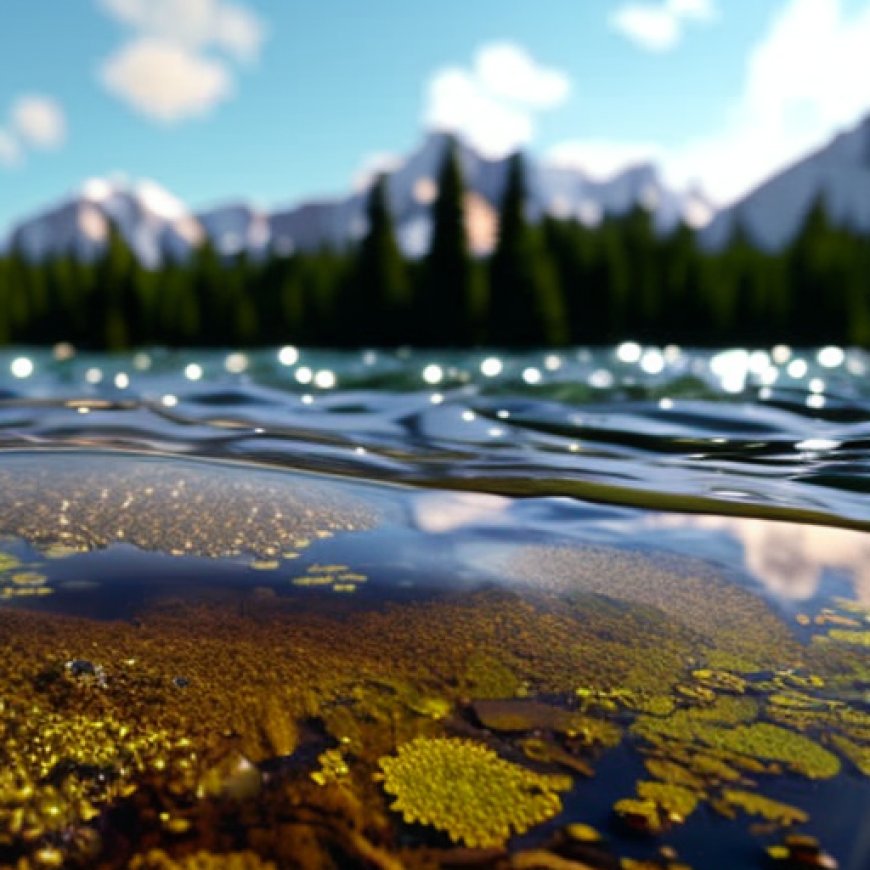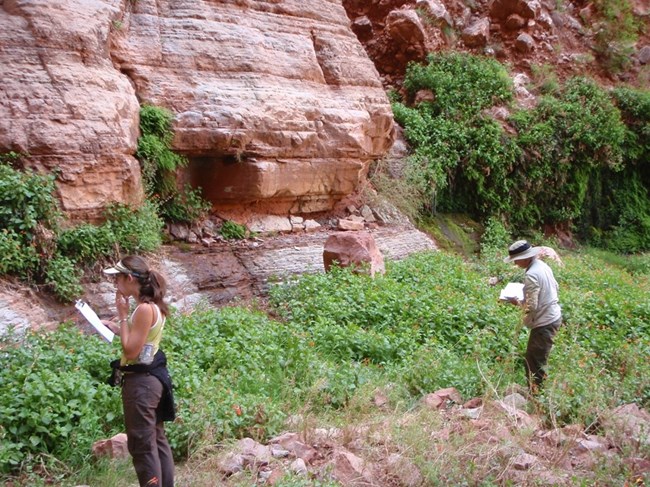How the NPS is protecting groundwater for people and ecosystems (U.S. National Park Service)


Water for Ecosystems

NPS/Steve Rice
Staff of the NPS WRD and the NPS CCRP are partnering with the University of Nevada-Reno Desert Research Institute (DRI) to lead the “Water for Ecosystems” project. Compared to “Water for People” which focuses on evaluating vulnerabilities facing human water supplies in national parks, this project focuses on protecting areas of natural groundwater discharge and their dependent ecosystems. The goal is to preserve these resources for current and future generations of visitors to enjoy.
Areas of natural groundwater discharge are often locations of backcountry water supplies, biodiversity hotspots, habitat for rare and endemic species, locations of cultural and spiritual importance, and sites of exceptional natural beauty. The NPS manages areas containing many of the few remaining unaltered or unimpacted spring sites in the country, particularly in the arid west.
The team will develop a geospatial database and web application for critical NPS groundwater-dependent ecosystems, evaluate their vulnerability to climate change, and identify restoration and adaptation opportunities, data gaps, and priority monitoring locations to address vulnerable ecosystems. The data will inform science-based decision-making for current and future maintenance of groundwater-dependent ecosystems in the NPS.
“Groundwater-dependent ecosystems are considered sentinel sites for evaluating the effects of drought and climate change on the broader landscape,” said Steve Rice, the NPS WRD Groundwater Program Lead. “Understanding where these features exist and how they have changed over time will allow for the development of tools and approaches to management, protection, and resilience.”
Additionally, with support from the Office of the Solicitor, this project will evaluate the vulnerability of NPS water rights and develop legal strategies for acquiring and protecting water rights to enhance the climate change resilience of groundwater-dependent ecosystems.
Through these projects, the NPS is stepping up to the challenge of increasing the security of park water resources that may be affected by climate change. These projects will have long-standing impacts for maintaining and protecting NPS water resources for current and future generations – and keeping you hydrated while you recreate, too.
References:
- Eileen Poeter, Ying Fan, John Cherry, Warren Wood, Doug Mackay, 2020, Groundwater in our water cycle – getting to know Earth’s most important fresh water source. The Groundwater Project, Guelph, Ontario, Canada. https://doi.org/10.21083/978-1-7770541-1-3.
- Environmental Justice, Justice 40 Initiative. (n.d.). The White House. Justice40 Initiative | Environmental Justice | The White House
- National Oceanic and Atmospheric Administration. (n.d.). Wildfire-Climate Connection. https://www.noaa.gov/noaa-wildfire/wildfire-climate-connection#:~:text=Research%20shows%20that%20changes%20in,fuels%20during%20the%20fire%20season
- National Park Service. (n.d.). Climate Change Vulnerability Assessment. https://www.nps.gov/subjects/climatechange/vulnerability.htm
- National Park Service. (n.d.). The Organic Act of 1916. https://www.nps.gov/grba/learn/management/organic-act-of-1916.htm
- U.S. Geological Survey. (n.d.). The Water Cycle. Water Science School. https://www.usgs.gov/special-topics/water-science-school/science/water-cycle
- Wood, W. W. and Dave Hyndman, 2018, Sea level rise cut in half?. Groundwater, volume 56, number 6, page 845, ngwa.onlinelibrary.wiley.com/doi/10.1111/gwat.12821
SDGs, Targets, and Indicators
1. Which SDGs are addressed or connected to the issues highlighted in the article?
- SDG 6: Clean Water and Sanitation
- SDG 13: Climate Action
- SDG 15: Life on Land
The article discusses the importance of protecting natural groundwater discharge areas and their dependent ecosystems, which is connected to SDG 6 (Clean Water and Sanitation). It also mentions evaluating the vulnerability of NPS water rights and developing strategies for enhancing the climate change resilience of groundwater-dependent ecosystems, which relates to SDG 13 (Climate Action). Additionally, the preservation of biodiversity hotspots, habitat for rare and endemic species, and sites of exceptional natural beauty aligns with SDG 15 (Life on Land).
2. What specific targets under those SDGs can be identified based on the article’s content?
- SDG 6.6: Protect and restore water-related ecosystems
- SDG 13.1: Strengthen resilience and adaptive capacity to climate-related hazards
- SDG 15.5: Take urgent and significant action to reduce degradation of natural habitats
The article highlights the goal of protecting areas of natural groundwater discharge and their dependent ecosystems, which aligns with SDG 6.6. The evaluation of vulnerability to climate change and the identification of restoration and adaptation opportunities correspond to SDG 13.1. The preservation of biodiversity hotspots and habitats for rare and endemic species relates to SDG 15.5.
3. Are there any indicators mentioned or implied in the article that can be used to measure progress towards the identified targets?
- Geospatial database and web application for critical NPS groundwater-dependent ecosystems
- Evaluation of vulnerability to climate change
- Identification of restoration and adaptation opportunities
- Data gaps and priority monitoring locations
- Evaluation of NPS water rights vulnerability and legal strategies for acquisition and protection
The article mentions the development of a geospatial database and web application for critical NPS groundwater-dependent ecosystems, which can serve as an indicator for measuring progress towards the target of protecting and restoring water-related ecosystems (SDG 6.6). The evaluation of vulnerability to climate change, identification of restoration and adaptation opportunities, and identification of data gaps and priority monitoring locations can be used as indicators for measuring progress towards strengthening resilience and adaptive capacity to climate-related hazards (SDG 13.1). The evaluation of NPS water rights vulnerability and the development of legal strategies for acquisition and protection can be indicators for measuring progress towards enhancing the climate change resilience of groundwater-dependent ecosystems.
4. Table: SDGs, Targets, and Indicators
| SDGs | Targets | Indicators |
|---|---|---|
| SDG 6: Clean Water and Sanitation | 6.6: Protect and restore water-related ecosystems | – Geospatial database and web application for critical NPS groundwater-dependent ecosystems – Evaluation of vulnerability to climate change – Identification of restoration and adaptation opportunities – Data gaps and priority monitoring locations |
| SDG 13: Climate Action | 13.1: Strengthen resilience and adaptive capacity to climate-related hazards | – Evaluation of vulnerability to climate change – Identification of restoration and adaptation opportunities – Data gaps and priority monitoring locations |
| SDG 15: Life on Land | 15.5: Take urgent and significant action to reduce degradation of natural habitats | – Preservation of biodiversity hotspots and habitats for rare and endemic species |
Source: nps.gov








